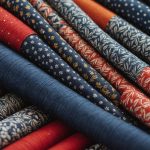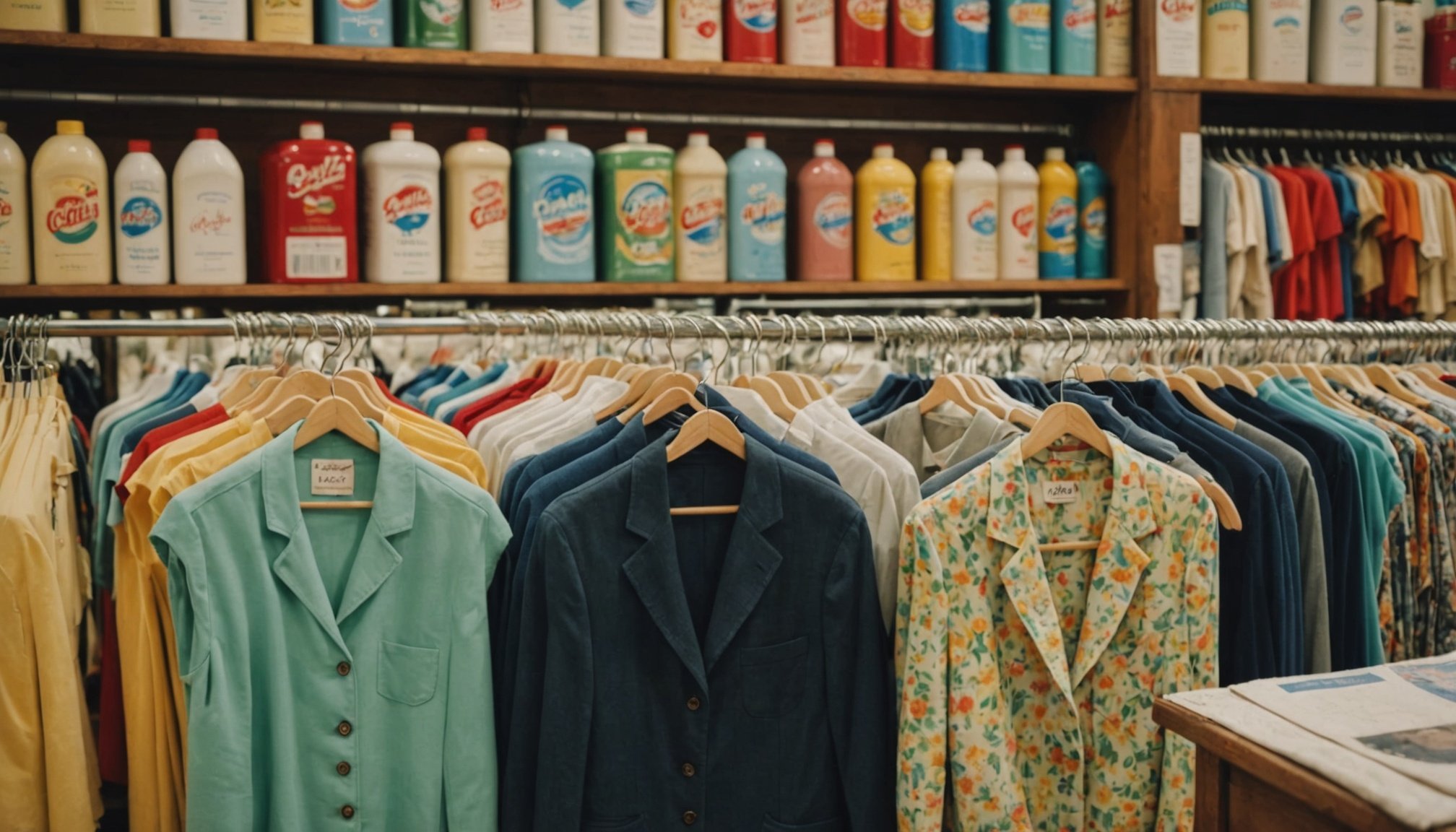The Ultimate Guide to Choosing the Perfect Fabric Conditioner for Preserving Vintage Clothing in the UK
Preserving vintage clothing is an art that requires careful attention to detail, especially when it comes to the fabrics and the conditioners used to maintain them. Whether you’re a collector, a fashion enthusiast, or simply someone who values the uniqueness of vintage items, choosing the right fabric conditioner is crucial. Here’s a comprehensive guide to help you make the best decisions for your precious vintage clothes.
Understanding Your Fabrics
Before diving into the world of fabric conditioners, it’s essential to understand the types of fabrics you’re dealing with. Vintage clothing can be made from a variety of materials, including cotton, wool, tweed, and leather.
In the same genre : Find the Perfect Swimwear for Stylish Comfort on Chilly UK Beach Days
Cotton and Organic Cotton
Cotton is one of the most common fabrics in vintage clothing. It’s breathable, durable, and relatively easy to care for. However, cotton fabrics can become dry and brittle over time. For cotton and organic cotton items, look for conditioners that are gentle and free from harsh chemicals. Organic cotton fabrics, like those from CastleWare, are particularly sensitive and require conditioners that are chemical-free and safe[3].
Wool and Tweed
Wool and tweed fabrics are known for their warmth and texture. These fabrics can be more delicate and may require special care. When conditioning wool or tweed, it’s important to use products that maintain their natural oils without weighing them down. British brands often prioritize high-quality fabrics like wool and tweed, ensuring they remain soft and durable over time[1].
Topic to read : Finding Your Ideal Nude Lipstick Shade: A UK Guide to Complementing Your Skin Tone
Leather
Leather items are a staple in many vintage collections. Leather requires specific care to prevent drying out and cracking. Mink oil is a popular conditioner for leather, as it replenishes the natural oils lost during use and lubricates the fibers, making them more flexible and durable.
“Mink oil was the conditioner of choice to re-saturate that leather, prevent it from drying out and cracking. So it just adds that moisture. That gives you a longevity of leather,” says Weston Kay, a leatherworker and YouTuber at Rose Anvil[2].
Choosing the Right Fabric Conditioner
The right fabric conditioner can make a significant difference in the longevity and appearance of your vintage clothes.
For Cotton and Organic Cotton
For cotton and organic cotton fabrics, you want a conditioner that is gentle and non-toxic. Here are a few tips:
- Hand Washing: Always hand wash cotton and organic cotton items in cold water to prevent damage.
- Mild Detergents: Use mild detergents that are free from harsh chemicals.
- White Vinegar: Adding a small amount of white vinegar to the wash can help maintain the fabric’s original color and softness.
For Wool and Tweed
Wool and tweed fabrics require conditioners that are specifically designed for these materials. Here are some considerations:
- Avoid Machine Washing: Wool and tweed should never be machine washed, as this can cause shrinkage and damage.
- Cold Water: Hand wash these fabrics in cold water using a mild detergent.
- Air Dry: Always air dry wool and tweed items, avoiding direct sunlight which can cause fading.
For Leather
Leather conditioners are specialized and can vary depending on the type of leather.
- Mink Oil: As mentioned, mink oil is excellent for conditioning leather, but it can darken the leather over time.
- Alternative Conditioners: Products like Bickmore Bick 4 and Obenauf’s Heavy Duty LP are great alternatives that condition and protect leather without darkening it[2].
Detailed Guide to Popular Fabric Conditioners
Here is a detailed look at some popular fabric conditioners, including their pros and cons:
Mink Oil
- Pros:
- Replenishes natural oils in leather.
- Softens and lubricates leather fibers.
- Extends the lifespan of leather items.
- Cons:
- Can darken the leather over time.
- Not suitable for all types of leather.
Bickmore Bick 4
- Pros:
- Preserves the original color of the leather.
- Conditions, cleans, and protects leather without darkening it.
- Extends the lifespan of leather items.
- Cons:
- Does not deeply penetrate the pores of the leather.
- Does not improve water resistance as much as mink oil.
Obenauf’s Heavy Duty LP
- Pros:
- Contains beeswax and natural nourishing ingredients.
- Protects the leather from moisture and keeps natural oils in.
- Suitable for chrome-tanned leather.
- Cons:
- Best used on specific types of leather (chrome-tanned).
- May not be as effective for oil-tanned or vegetable-tanned leather.
Table: Comparing Popular Leather Conditioners
| Conditioner | Key Ingredients | Pros | Cons |
|---|---|---|---|
| Mink Oil | Mink fat | Replenishes natural oils, softens leather, extends lifespan | Can darken leather, not suitable for all leather types |
| Bickmore Bick 4 | Natural emulsifiers, conditioners, moisturizers | Preserves original color, conditions and protects without darkening | Does not deeply penetrate pores, does not improve water resistance |
| Obenauf’s Heavy Duty LP | Beeswax, natural oils | Protects from moisture, keeps natural oils in, suitable for chrome-tanned leather | Best used on chrome-tanned leather, may not be effective for other types |
| Obenauf’s Oil For Moderate Conditions | Beeswax, natural oils | Hydrates leather, heals cracks, suitable for oil-tanned and vegetable-tanned leather | May not be as effective for chrome-tanned leather |
| Saphir Renovateur | Mink oil, waxes | Conditions, shines, produces soft patina, does not darken leather | Not a full alternative to mink oil, contains a mix of ingredients |
Practical Tips for Conditioning Vintage Clothes
Here are some practical tips to help you condition and care for your vintage clothes effectively:
Hand Washing
- Always hand wash delicate or vintage items in cold water to prevent damage.
- Use a mild detergent that is free from harsh chemicals.
Avoiding Direct Sunlight
- Direct sunlight can cause fading and damage to fabrics. Always air dry items away from direct sunlight.
Using White Vinegar
- Adding a small amount of white vinegar to the wash can help maintain the fabric’s original color and softness.
Freezing to Reduce Shedding
- For hairier yarns or fabrics, freezing the garment can help reduce shedding. Place the garment in a plastic bag and put it in the freezer for a few hours before shaking it vigorously and washing it according to the instructions[5].
Avoiding Machine Washing
- Machine washing can be too harsh for many vintage fabrics. Always opt for hand washing or dry cleaning if necessary.
Anecdotes and Examples
Preserving a Vintage Leather Jacket
Imagine you have a vintage leather jacket that has been passed down through generations. To preserve it, you would use mink oil to condition the leather, ensuring it remains soft and flexible. However, if you’re concerned about the leather darkening, you might opt for Bickmore Bick 4 instead.
Caring for a Wool Sweater
For a vintage wool sweater, hand washing in cold water with a mild detergent is crucial. After washing, gently squeeze out excess water and lay the sweater flat to air dry. Avoid hanging it up, as this can cause stretching.
Preserving vintage clothing is a meticulous process that requires the right tools and knowledge. By understanding the types of fabrics you’re working with and choosing the appropriate conditioners, you can extend the life of your vintage items and keep them looking their best.
Remember, the key to preserving vintage clothes is to be gentle and patient. Always read the labels, follow the care instructions, and use conditioners that are specifically designed for the type of fabric you’re dealing with. With the right care, your vintage clothes can remain timeless and beautiful for generations to come.
Final Tips and Recommendations
- Read Care Labels: Always read the care labels on your vintage clothes to understand the best cleaning methods.
- Use High Quality Conditioners: Invest in high-quality conditioners that are designed for your specific fabric types.
- Avoid Harsh Chemicals: Steer clear of harsh chemicals and detergents that can damage your fabrics.
- Consult Professionals: If you’re unsure about the best way to care for a particular item, consult a professional dry cleaner or restorer.
By following these guidelines and using the right fabric conditioners, you’ll be well on your way to preserving your vintage clothing and ensuring they remain in excellent condition for years to come.










